REEB Steezl
Wheel Size: 29’’ (29’’ front / 27.5’’ rear compatible)
Travel: 155 mm rear / 160 mm front
Geometry Highlights:
- Sizes offered: S, M, L, XL, XXL
- Headtube angle: 64°
- Seat tube angle: 77°
- Reach: 480 mm (size Large)
- Chainstay length: 434 mm (size Large)
Frame Material: Steel front triangle / aluminum rear triangle
Price:
- Frame w/ shock starting at $3,795 (multiple options available)
- Frame, fork, and shock packages from $4,695
- Complete bikes from $6,695
Reviewers:
- David Golay (6′, 170 lb / 183 cm, 77.1 kg)
- Zack Henderson (6′, 160 lb / 183 cm, 72.6 kg)
Test Location: Washington
Test Duration: 2.5 months
Blister’s Measured Weight: 35.8 lb / 16.2 kg
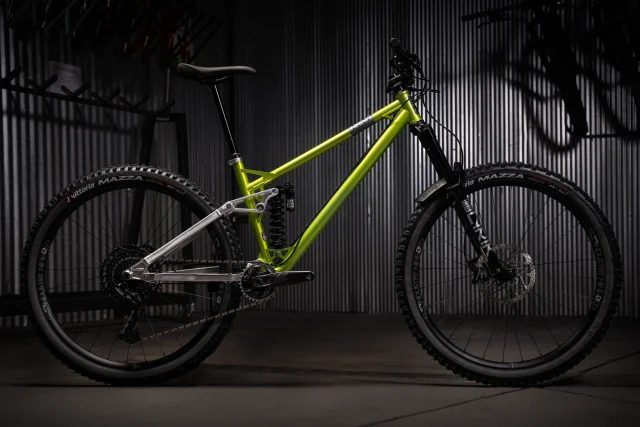
Intro
REEB calls the Steezl an “Enduro rig meant to pedal all day and destroy descents.” On paper, it does look like it could be an especially versatile take on a relatively aggressive bike. It does so with some interesting design details, including a steel front triangle that incorporates a 3D-printed main pivot assembly, and a bunch more. So what has REEB cooked up here, and what makes it stand out? Let’s take a look.
[If you want a whole lot more on REEB’s backstory, their philosophy on bike design, and more, check out Ep. 121 of Bikes & Big Ideas with Jeff Lenosky and Adam Prosise from REEB.]
The Frame
The Steezl gets 155 mm of rear wheel travel from a fairly standard Horst link layout with a vertically oriented shock, and pairs that with a 160 mm fork (in stock guise; REEB says you can go up to a 170 mm one if you want). A flip chip at the lower shock mount lets you toggle between a 27.5’’ or a 29’’ rear wheel with minimal changes to the geometry, with all sizes running a 29’’ front wheel. Pretty normal so far.
Things get more interesting when it comes to the construction. Following in the footsteps of REEB’s shorter-travel SST, the Steezl gets a steel front triangle that uses a mix of Chromoly tubes and a 3D-printed stainless steel main pivot assembly and downtube / seat tube junction. Unlike the SST, which carries that same construction to the rear triangle — including a 3D-printed flex-stay piece in lieu of a dropout pivot — the Steezl opts for a more conventional aluminum rear end with a bearing pivot between the chainstay and seatstay. An aluminum rocker link drives a 205 x 62.5 mm Trunnion mount shock to produce the Steezl’s 155 mm of rear wheel travel. REEB doesn’t list any kinematic details for the Steezl, but says that it works well with both air and coil shocks, and they offer builds with both (more on those below).
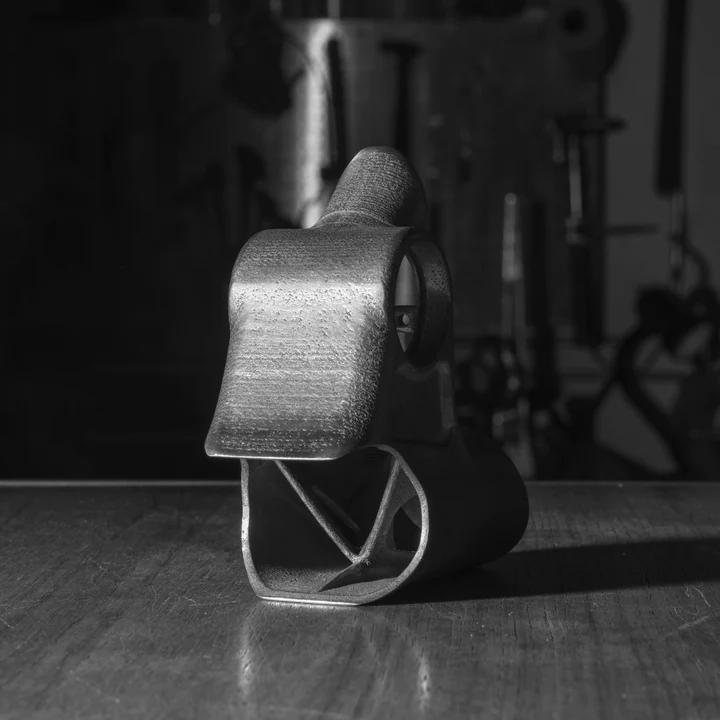
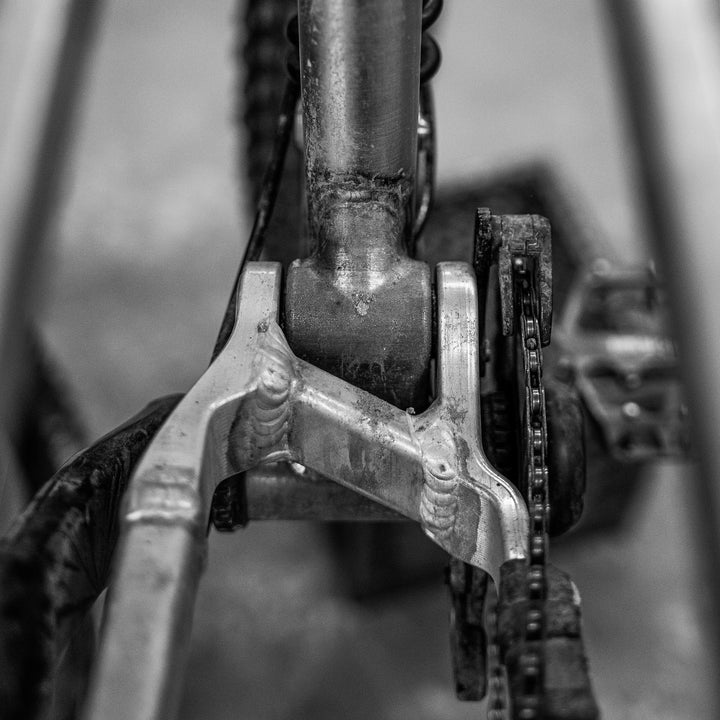
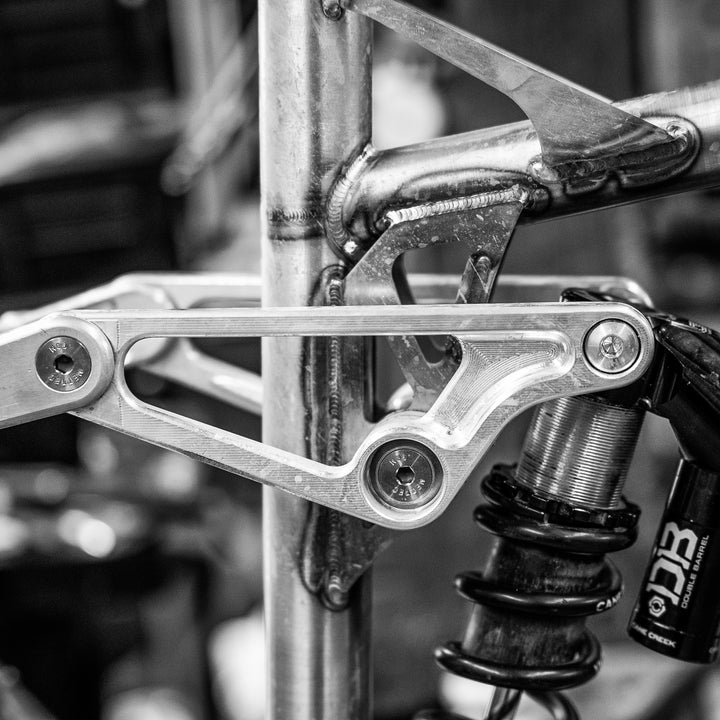
The other design details are pleasantly no-nonsense. There’s a threaded bottom bracket shell with ISCG-05 tabs, fully external cable routing with bolt-on guides, room for a water bottle inside the front triangle on all sizes, and a nice, straight seat tube for ample dropper post insertion. The Steezl uses a UDH for Sram Transmission compatibility, and tire clearance is stated at up to 2.6’’ wide.
Like all of REEB’s frames, the Steezl is made in REEB’s own facility in Lyons, CO. The Steezl is offered in two stock colors, a subtle blueish-gray that they call “Kongcrete” (below) or a much-less-subtle (but pretty sweet looking) sparkly neon green, dubbed “Ectoplazm.” Custom paint is available for an upcharge.
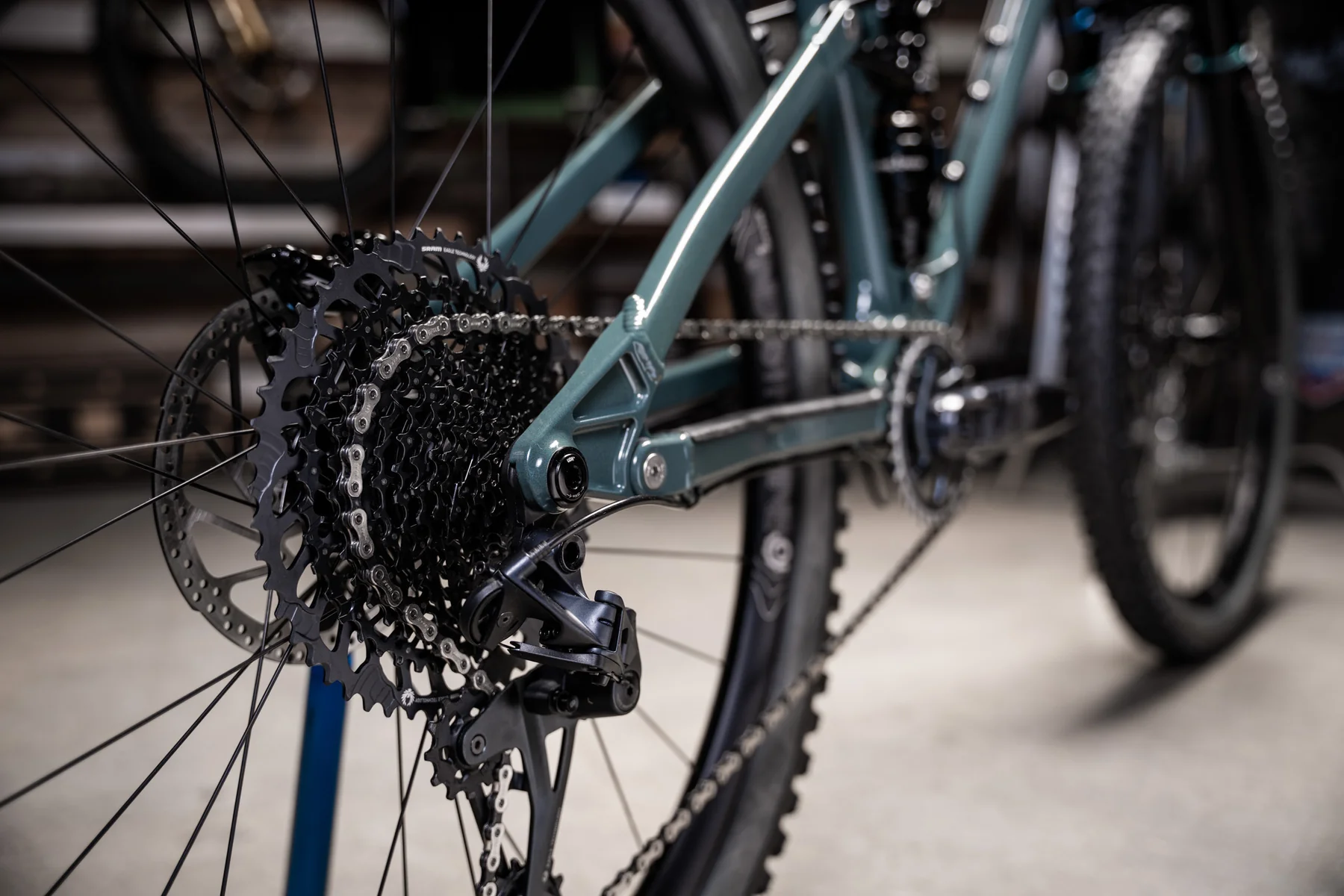
Fit & Geometry
REEB offers the Steezl in five sizes, labeled Small through XXL, with reach numbers ranging from 445 to 520 mm, with the Medium coming in at 460 mm and each successive size gaining 20 mm from there. All five get a 64° headtube angle and 77° seat tube angle, plus a 25 mm bottom bracket drop. The Small, Medium, and Large frames default to 434 mm chainstays while the XL and XXL bump those up to 444 mm, but the rear ends can be swapped if you want to mix and match. And if you want to go further off menu, REEB is offering semi-custom geometry on the Steezl, for a limited time. Get in touch with them if you’re interested.
The Builds
REEB’s website lists four standard builds for the Steezl, but they’re basically like two different builds with a lot of (way more than four, actually) options for suspension packages.
Small and Medium bikes default to a 27.5’’ rear wheel while the larger sizes come as 29ers, but REEB offers custom builds if you want to tweak things, including the rear wheel size.
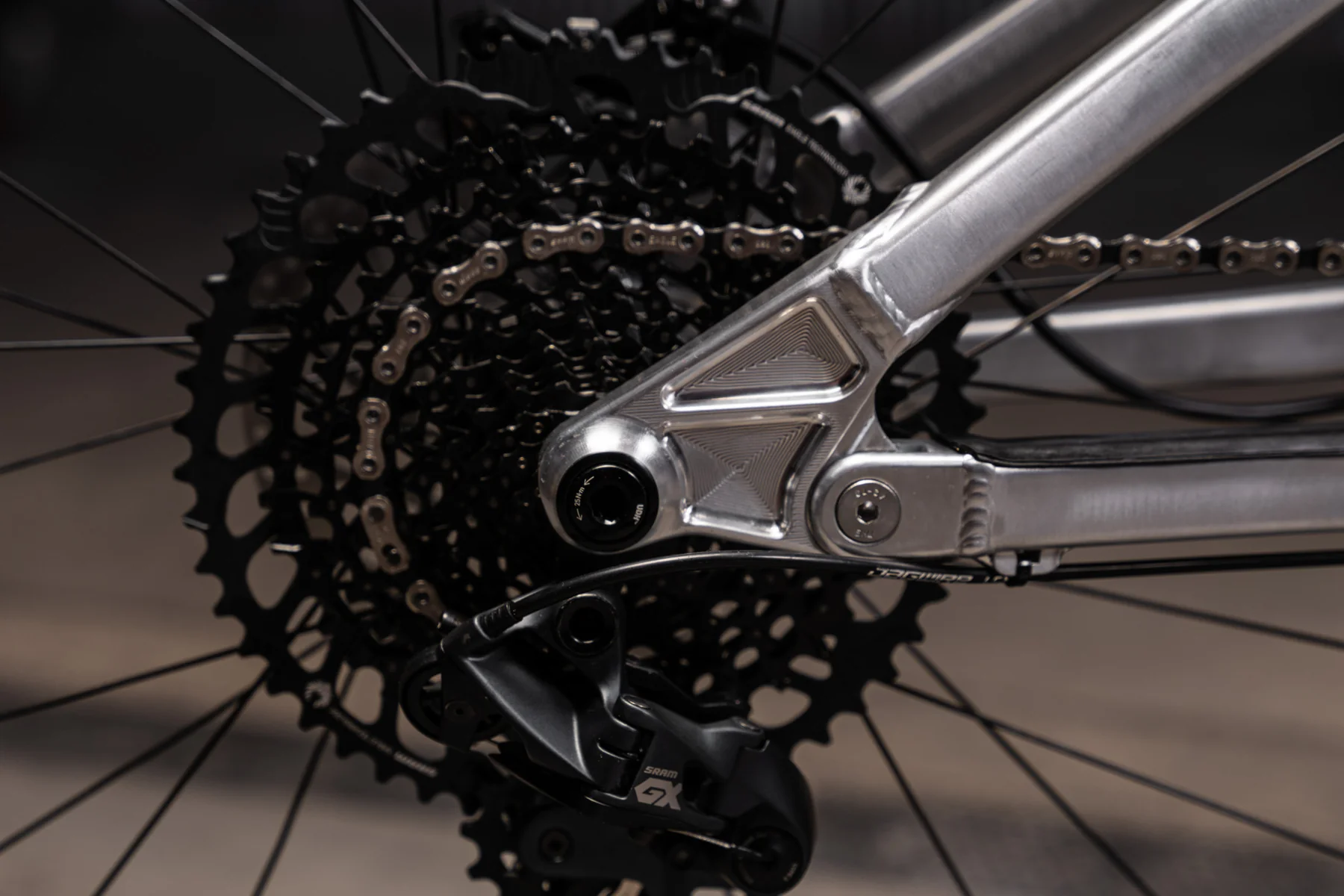
- Drivetrain: SRAM GX Mechanical
- Brakes: TRP Trail Evo (203 mm front / 180 mm rear rotors)
- Suspension Options:
- Cane Creek Helm / Cane Creek Double Barrel Kitsuma Air
- RockShox Lyrik Ultimate / RockShox Super Deluxe Ultimate
- Öhlins RXF36 m.2 / Öhlins TTX2 Air (+$600)
- Wheels: Industry Nine 1/1 Enduro S
- Dropper Post: OneUp V2
- Drivetrain: SRAM GX Mechanical
- Brakes: TRP Trail Evo (203 mm front / 180 mm rear rotors)
- Suspension Options:
- Cane Creek Helm / Cane Creek Double Barrel Kitsuma Coil
- RockShox Lyrik Ultimate / RockShox Super Deluxe Ultimate Coil
- Öhlins RXF36 m.2 / Öhlins TTX22 Coil (+$600)
- Wheels: Industry Nine 1/1 Enduro S
- Dropper Post: OneUp V2
- Drivetrain: SRAM X0 Transmission
- Brakes: TRP DHR Evo (203 mm front / 180 mm rear rotors)
- Suspension Options:
- Cane Creek Helm / Cane Creek Double Barrel Kitsuma Air
- RockShox Lyrik Ultimate / RockShox Super Deluxe Ultimate
- Öhlins RXF36 m.2 / Öhlins TTX2 Air (+$600)
- Wheels: Industry Nine 1/1 Enduro S
- Dropper Post: OneUp V2
- Drivetrain: SRAM X0 Transmission
- Brakes: TRP DHR Evo (203 mm front / 180 mm rear rotors)
- Suspension Options:
- Cane Creek Helm / Cane Creek Double Barrel Kitsuma Coil
- RockShox Lyrik Ultimate / RockShox Super Deluxe Ultimate Coil
- Öhlins RXF36 m.2 / Öhlins TTX22 Coil (+$600)
- EXT Era / EXT Storia V3 (+$1,200)
- Wheels: Industry Nine 1/1 Enduro S
- Dropper Post: OneUp V2
Interestingly, our review bike showed up with what is essentially the GX Air build (with the RockShox Lyrik / Super Deluxe Air suspension package), but with a GX Transmission swapped in for the standard GX offering. The X0 builds also get some fancier finishing parts (OneUp carbon bar, Industry Nine stem, etc.) over the Spank aluminum bits on the GX ones. Both come with Vittoria Mazza Trail tires, in a 2.6’’ front / 2.4’’ rear combo.
Some Questions / Things We’re Curious About
(1) Where does the Steezl land on the spectrum between the more aggressive Trail bikes on the market and the bigger, burlier Enduro ones? We’re guessing it’ll blur the lines between those categories a little bit and are excited to spend more time on one to find out.
(2) If that assumption proves to be correct, how does the Steezl compare to a bunch of other bikes that we’d say similar things about, such as the Ibis Ripmo, Starling Murmur Enduro, We Are One Arrival 152, and others?
(3) And how much does the steel front triangle contribute to the overall feel and performance of the Steezl? We’ve recently been on a lot of steel full-suspension bikes, and there’s a big range of ride qualities across them — so where does the Steezl fit in?
Bottom Line (For Now)
On paper, REEB’s description of the Steezl as a bike that’s able to go hard on bigger descents, while still being efficient and nimble enough to handle all-day epics looks about right — but we’ll just need to spend a bunch of time on one to find out. We’ve got a Steezl in for review and have started spending time on it, so stay tuned for more to come soon.
Flash Review
Blister Members can read our Flash Review of the Steezl for our initial on-trail impressions. Become a Blister Member now to check out this and all of our Flash Reviews, plus get exclusive deals and discounts on gear, and personalized gear recommendations from us.
FULL REVIEW
Steel full-suspension bikes seem to be having a bit of a moment and we’ve spent time on a whole bunch of them this year, including the Starling Murmur, Cotic RocketMAX, Contra MC (full review coming soon), Chromag Darco, and now the REEB Steezl. Most of those bikes have a rather distinct character in one way or another, but the Steezl is probably the most versatile, well-rounded do-it-all bike of the bunch — it’s not just an oddball offering for folks who want something that really stands out at the trailhead.
But what exactly does the Steezl do (and not do) well, and how does it stack up to the modern crop of relatively versatile longer-travel bikes? Let’s dive in.

Fit & Sizing
David Golay (6’, 170 lb / 183 cm, 77.1 kg): REEB doesn’t list recommended sizing ranges for the various sizes of the Steezl, but based on the fit numbers, I figured that, at 6’ / 183 cm tall, I could comfortably ride the Large or XL Steezl. Having now spent a bunch of time on the Large one, I think that hunch was largely correct — but also that the Steezl isn’t a bike that I’d be super quick to size up on, and that the slightly more compact fit of the Large frame suited its overall character well.
Both the reach and effective top tube numbers of the Large and XL (480 / 500 mm and 626 / 648 mm, respectively) essentially bracket my typical preferred ranges for a more aggressive Trail / Enduro bike. Given that the Steezl turned out to be a bit more of a versatile Trail bike and a little less of a full-on Enduro charger than I expected, the decision to opt for the smaller, more maneuverable size turned out to be a good one. The Large Steezl does indeed feel on the more compact end of what I’m generally comfortable on, but in a “this feels super easy to throw around” kind of way rather than a “this bike is too small” one. I’m sure I could ride the XL Steezl, but the Large felt like the right call for the combination of traits that the Steezl brings to the table — which we’ll get into in much more detail in a minute.
Zack Henderson (6’, 160 lb / 183 cm, 72.6 kg): Despite our identical heights, I have slightly different proportions than David, with a slightly longer torso and correspondingly shorter legs. The size Large Steezl’s 480 mm reach is right in my sweet spot, and while the seated position felt a bit short with the 626 mm effective top tube length, it wasn’t far off from my preferences either. I agree with David that the somewhat compact feel of the Large Steezl suited the bike’s personality well — as we’ll discuss below, its very energetic-feeling suspension and generally sprightly ride quality suited the more manageable length quite well. It’s worth noting that, even with my slightly shorter inseam for my height, the short seat tube on the Large Steezl meant that I was still able to run the stock 240 mm OneUp dropper.
Climbing
David: The Steezl is one of the most efficient pedaling ~160mm-travel bikes I’ve been on in recent memory, and while it’s not especially light (35.8 lb / 16.2 kg without pedals), it feels lighter and more sprightly than expected on the way up. There are plenty of bikes in this travel range that’ll slowly spin up a long fire road climb just fine, but the Steezl feels more inclined to push the pace and go quickly than those more winch-and-plummet sort of sleds. The Steezl is not immune to the tradeoff that tends to exist between pedaling efficiency and traction under power, but the Steezl does a better-than-average job of balancing the two, feeling quite snappy and energetic for its weight and travel range while still having solid (but not best-in-class) grip and sensitivity when getting on the pedals.
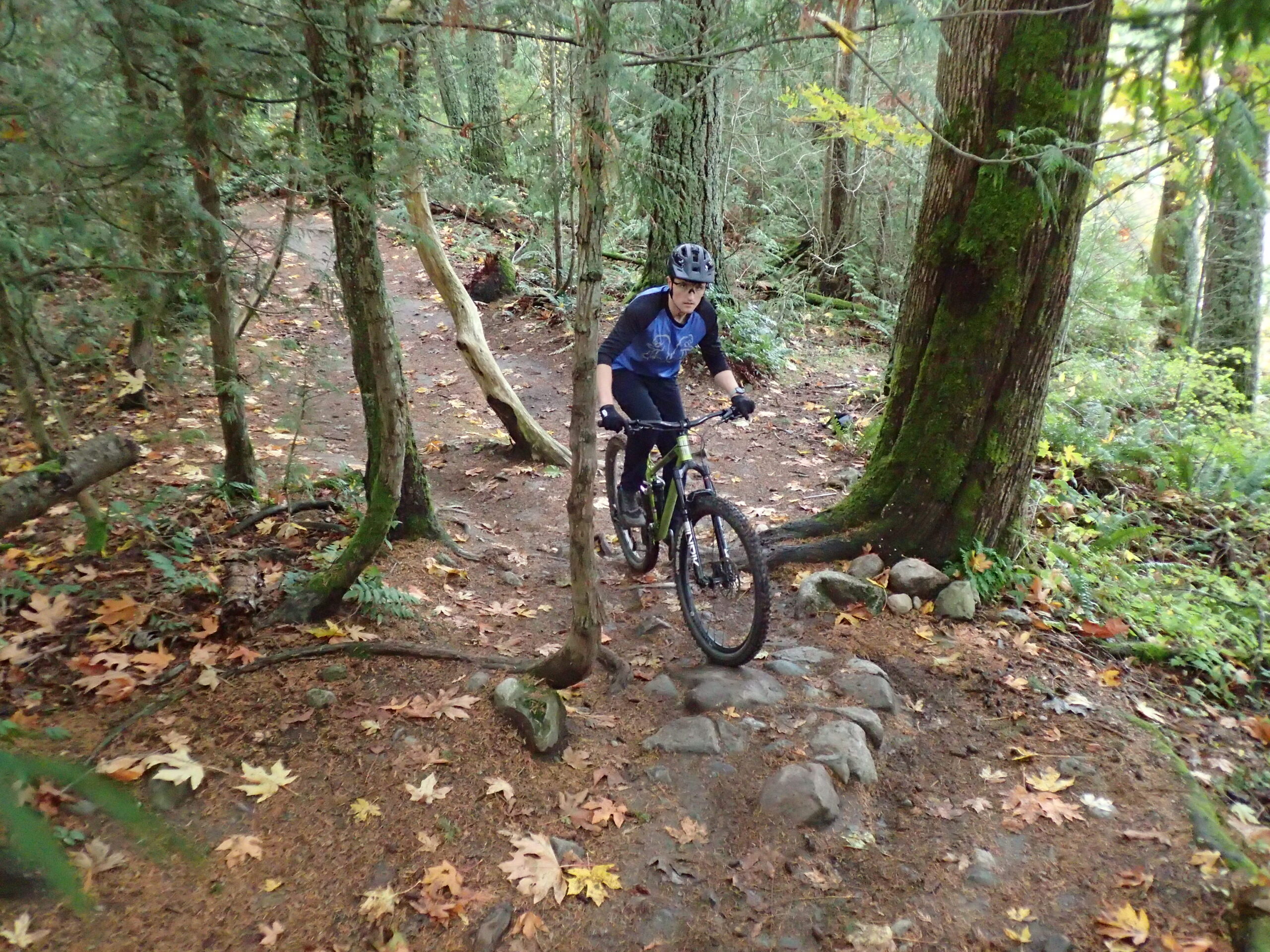
Zack: The climbing trails in Bellingham are generally of two varieties — meandering and chunky low-angle singletrack, or steep and monotonous fire roads. I often expect that more substantial bikes like the Steezl will be a bit ponderous on the singletrack trails, but this REEB genuinely surprised me in this regard with its peppy pedaling feel, abundant traction, and comfortable climbing position. Its mildly compact seated position and short 434 mm chainstays likely helped with this, offering a lot of maneuverability in technical bits of trail, while the supportive suspension kept the bike high in its travel, yet still sensitive. While they had significant drawbacks going downhill, the lightweight casings of the Vittoria Mazza G2.0 tires undoubtedly helped keep inertia low and offered a lot of grip on wet roots, furthering the Steezl’s ability to make quick work of tricky climbs.
David: If I’d hopped straight on the Steezl without knowing anything about it, its climbing performance would have made me guess that it was a couple of pounds lighter and notably shorter in travel than it actually is — very much in a good way. The pedaling position is also quite good, with a seat tube angle that’s steep enough to keep the front wheel planted without much effort on even quite-steep fire road climbs, while still feeling comfortable on flatter sections and more rolling terrain. The “big days” part of REEB’s description of the Steezl is on point — as an efficient bike with a good bit of suspension travel, it offers up a nice combination of being relatively un-fatiguing on both the way up and the subsequent descent.
The Steezl is also an especially good technical climber for a longer-travel bike, particularly for folks (and I’d count myself in this camp) who would rather have a relatively maneuverable bike that’s easy to place where they want, puts down power effectively, and generally favors precise riding and careful line selection over having maximum grip and compliance under power / just tractor-ing its way over everything. It’s maybe not the most ideal option if you want a bike to make up for mistakes and sloppy technique, but it rewards more careful, precise riding when the climbs start getting tricky.
Descending
David: The Steezl surprised me with how efficient and energetic it felt on the way up, and that continued on the descents as well. As ~160mm-travel bikes go, it’s decidedly on the more nimble / less super planted and stable end of the spectrum. The Steezl feels best suited to folks who want a bike that facilitates active, dynamic riding over just bulldozing whatever’s in front of it. It’s also relatively quick handling and easy to maneuver at lower speeds and in tighter spots, and while it’s definitely more stable and composed at speed than a lot of (often shorter travel) Trail bikes, the Steezl feels more like an all-rounder Trail bike that happens to have a bit more suspension travel than a full-on winch-and-plummet Enduro rig.
That’s not to say that the Steezl can’t handle burly terrain. It’s just oriented more toward versatility in varied, rolling terrain while still having enough suspension travel and stability to keep up when things get steeper and rougher. The majority of modern Enduro bikes with 160+ mm of rear travel have an edge on the Steezl when it comes to carrying speed and remaining composed on really fast, rough trails. But the Steezl is more engaging than those sorts of bikes on less ultra-steep trails, where you’re more liable to try to maintain speed by pumping through compressions and sneaking in pedal strokes than by letting gravity do all the work. The Steezl is quite eager to take to the air and pop off / over smaller trail features, while having a good bit of suspension travel to mop up if you make a mistake or just need the bike to help soak up whatever you’re running into.

While I suspect that doing so would compromise the liveliness of the Steezl a little bit, I do think that a little more progression from the rear suspension would also help make it feel more composed when trying to carry speed in rougher sections, and help offer smoother, more consistent bottom-out control. I had a couple of hard bottom-outs during my first few rides on the Steezl, despite running a bit less sag than I often might on bikes in this travel range (having gone as low as about 25%). I then added a couple of volume spacers to the shock, which helped, but made for a slightly more aggressive ramp-up that started deeper in the stroke than felt ideal. I think getting there via some extra linkage progression could make for a smoother, more consistent ramp-up vs. having a lot of it happen quite late in the travel and feel like a bailout.
In particular, that more aggressive ramp-up made the rear end of the Steezl feel prone to hanging up a bit when really carrying speed into a rough section of trail, especially one that wasn’t steep enough to make it easy to get that speed back on the back side of the obstacle. With the extra volume spacers, the Steezl felt like it moved through the middle part of its travel a bit more readily than I wanted it to in those circumstances, and then didn’t have a ton of compliance left afterward, between just not having that much travel still on tap and the rapidly increasing progression in that part of it. So overall, I preferred to dial back the volume spacer configuration a little bit (settling on two) and just run a firmer setup with less sag than I might on a lot of other bikes. That helped make the suspension performance feel more balanced front to rear and was my preferred setup overall, but did come at the cost of some small-bump sensitivity and traction as compared to running more sag and more volume spacers.
In terms of its preferred body positioning and approach, I found the Steezl generally relatively neutral and intuitive. That said, and at least with the shorter 434 mm chainstays that come standard on our Large test bike, it’s probably not the best option for folks who like to ride really centered and upright. The Steezl doesn’t require a ton of care to stay forward on the bike and keep the front wheel gripping, but a little goes a long way. I’d be surprised if swapping in the longer 444 mm chainstays (which REEB can do at the time of ordering if you’d like) didn’t make the Steezl’s sweet spot bigger when it comes to riding it more centered and upright, but we haven’t tried that to confirm.
The Steezl frame also feels pretty stiff — notably so relative to a number of the other steel full-suspension bikes that we’ve been spending time on this year, such as the Starling Murmur and Chromag Darco. Of course, the Steezl has a fairly beefy aluminum rear end and notably large-diameter downtube in particular, and as we’ve been saying a bunch lately, ascribing any particular ride characteristics to just the materials used is generally not super accurate. But the Steezl doesn’t feel quite as obviously (or maybe stereotypically?) steel-built as some of those other options. If you’re skeptical about steel full-suspension frames in general because of worries about frame stiffness being lacking, the Steezl should put those to rest. It’s a nice-riding, pretty normal-feeling frame from a chassis-stiffness perspective, in a good way.
Zack: My time on the Steezl spanned a wide range of different types of trails, from shorter hot laps on local jump lines to longer pedals to access steeper and gnarlier terrain. With my latest steel-frame experience being the very big (and very capable) Cotic RocketMAX, I was curious how the slightly more conservative geometry of the Steezl and alloy rear end might compare to the RocketMAX and its notably vibration-deadening ride quality.
I hinted at this a bit in my comments on the Steezl’s climbing traits, but like David, I found the Steezl to offer a ride that falls somewhere in between game-on Enduro and pedal-friendly Trail categories — dare I try to bring back the old All-Mountain moniker? Undoubtedly aided by its relatively stiff frame and short chainstays, the Steezl excels in flatter, tighter terrain where carrying speed is critical. I ran a bit less than 30% sag to keep the bike from bottoming out, and I found that this lent a very energetic feel to the bike. This made it an absolute riot on trails with lots of more technical jumps and corners, where the shorter rear end could be slapped into supported corners while the peppy suspension meant that even questionably long gaps could be boosted with ease.
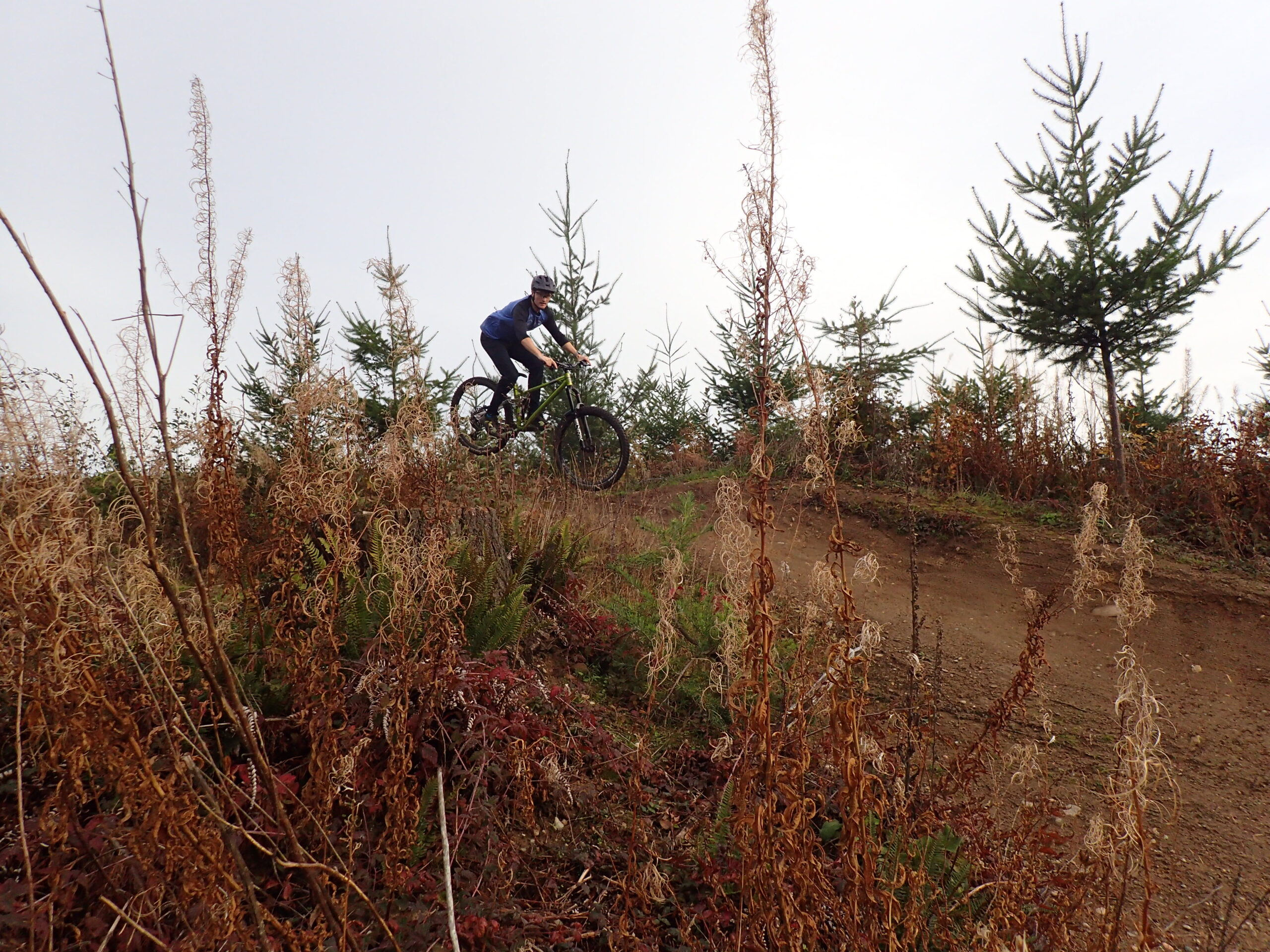
On steeper and more technical trails, the Steezl still held up pretty well, but it did lose ground compared to burlier Enduro bikes (see our Comparisons section below). For the ‘steel is real’ crowd, the Steezl doesn’t seem to offer quite as much of the damped ride as, say, the Cotic RocketMAX, but the Steezl’s frame does feel stiffer and consequently a bit more responsive. Where bigger bikes can monster truck down rough lines, the Steezl prefers to dance across the trail, making difficult tighter lines possible due to its very light-footed feel, but losing out a bit in the all-out speed department. As a rider who likes to be quite active on the bike and takes a more precise approach to line choice, I found the Steezl to be a lot of fun when I wasn’t trying to chase the fastest riders in my group on the nastiest trails in town.
As it stands, the Steezl is a refreshingly balanced take on the modern mountain bike, with contemporary angles but a ride quality that allows it to be both capable and engaging across the mountain. I live in a particularly steep and technical corner of the world, so for my purposes, I couldn’t help but wonder if the longer 444 mm chainstay option might lend a bit more stability, acknowledging that the bike would almost definitely lose some degree of playfulness. Regardless of the outcome, it is very cool that REEB allows buyers to select their chainstay length of choice, broadening the appeal of this already highly versatile bike.
The Build
David: Our review bike showed up with a slightly non-standard build, featuring a SRAM GX Transmission on what’s otherwise the Steezl Air GX build (in the RockShox configuration). It’s a nice build overall and feels generally in keeping with the intentions of the Steezl, featuring an assortment of solid but not ultra-burly parts. The GX Transmission works great, and I’d honestly be hard-pressed to tell the difference between it and the X0 variant — much more to say on that soon. If you don’t mind their notably long reach, the TRP Trail Evo brakes work very well, and the 240 mm OneUp dropper makes the Steezl the first review bike I’ve ever gotten that has a longer-travel seatpost than I strictly need — a very welcome change in a world where I’m often complaining about sub-200 mm posts on even Large or XL Enduro bikes.
I’m a big fan of the RockShox Lyrik and Super Deluxe suspension package, though I think the optional hydraulic bottom-out feature would be a welcome addition to the rear shock, particularly given the modest total progression of the Steezl’s linkage. Adding a couple of volume spacers to the air can helped, but the extra bit of control from the HBO option would presumably mitigate the need to do so, and in turn (hopefully) improve support through the middle part of the stroke.
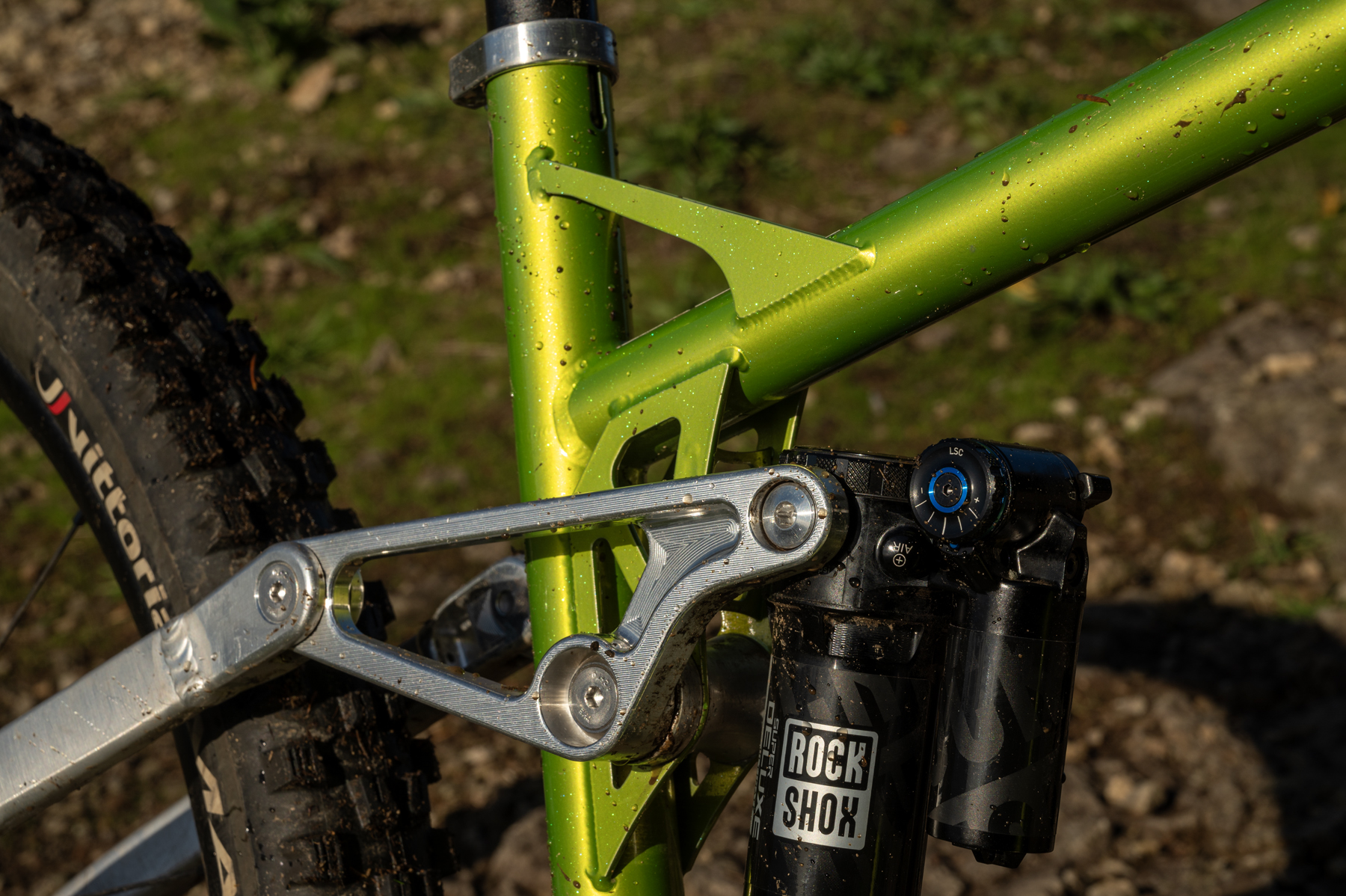
The casings on the Vittora Mazza tires are especially supple, and while I didn’t have any flats in my time running them on the Steezl, I did find myself running notably higher pressure than I do in a lot of other options in order to keep the Mazzas from feeling squirmy and burping in corners. They still ride nicely at those higher pressures — about 33 psi rear / 30 psi front — so I don’t see that as a problem so much as something to keep in mind when setting them up. I also spent a while with my current preferred heavier-duty all-rounder tires (Continental Kryptotal DH Super Softs) on the Steezl to see how beefed-up tires impacted its overall character; while they added a little weight and rolling resistance, it felt like a welcome update overall. The grip and performance of the Mazzas (from a tread pattern and rubber perspective) is solid, but the casings are flimsier than I’d like on this sort of bike, especially given the fairly high volume of the Mazza 2.6’’ front tire.
I didn’t have any issues dramatic enough to cut a ride short or render the wheels unrideable, but I found myself needing to true and re-tension the Industry Nine Enduro S wheels more often than average throughout my time on the Steezl. They’re not super stiff wheels by any stretch, but don’t feel unduly flexy, either; whatever the reason, they’d gradually lose spoke tension and needed touching up a couple of times over the course of our time on the Steezl. They weren’t hard to get back into shape but would be worth keeping an eye on, especially for the more maintenance-adverse folks out there.
The build quality on the Steezl frame is quite good. All the pivot hardware is simple and straightforwardly laid out, with clear attention paid to ease of maintenance when it comes time to replace pivot bearings and so on. It’s all pleasantly simple and no-frills, with external cable routing that uses nice bolt-on guides. The brake hose does come routed through the lower shock mount gusset, which means you would still need to disconnect the hose to remove the brake. The Steezl’s mastic-tape chainstay protection is a little bare-bones, and while it was generally muted and not super distracting, there was a good bit of muffled-but-audible chain slap from the Steezl. I couldn’t find any evidence of direct chain-to-frame contact anywhere, but a beefed-up chainstay protector, be it just another layer of mastic tape or something like VHS or STFU tape, would be a good call for folks who really care about keeping their bike quiet.
Zack: The 240 mm OneUp dropper was the first surprise of the build for me, since it was the longest dropper post I’ve seen on a stock build. I would actually argue that it was too long for me, since the seat felt miles away when fully slammed. While a 210 mm post might better suit my personal preference, it is admittedly very cool to see a company cramming that much drop into a bike when so many others struggle to fit even a 170-200 mm post in a size Large frame, and you can shim the 240 mm post down to 230 or 220 mm if you’d prefer.
The RockShox Lyrik is a somewhat uncommon sight on bikes in this travel class these days as the world seems to have embraced monster forks like the Fox 38 and Rockshox ZEB, but I found that the Lyrik nicely suited the handling of the Steezl. It’s a bit more forgiving as far as torsional stiffness goes and definitely feels lighter than the ZEB, though the Steezl’s frame certainly could handle the added beef of a ZEB up front to add some confidence if all-out descending was the priority. The Super Deluxe Ultimate shock was impressive as well, though I do find the large negative spring volume on Rockshox’s latest shocks to feel a little over-eager in terms of using their initial travel at times. Like David, I also wished for the HBO feature to help with end-stroke control, though some additional time spent fine-tuning air pressure kept me from too many harsh bottom-outs.
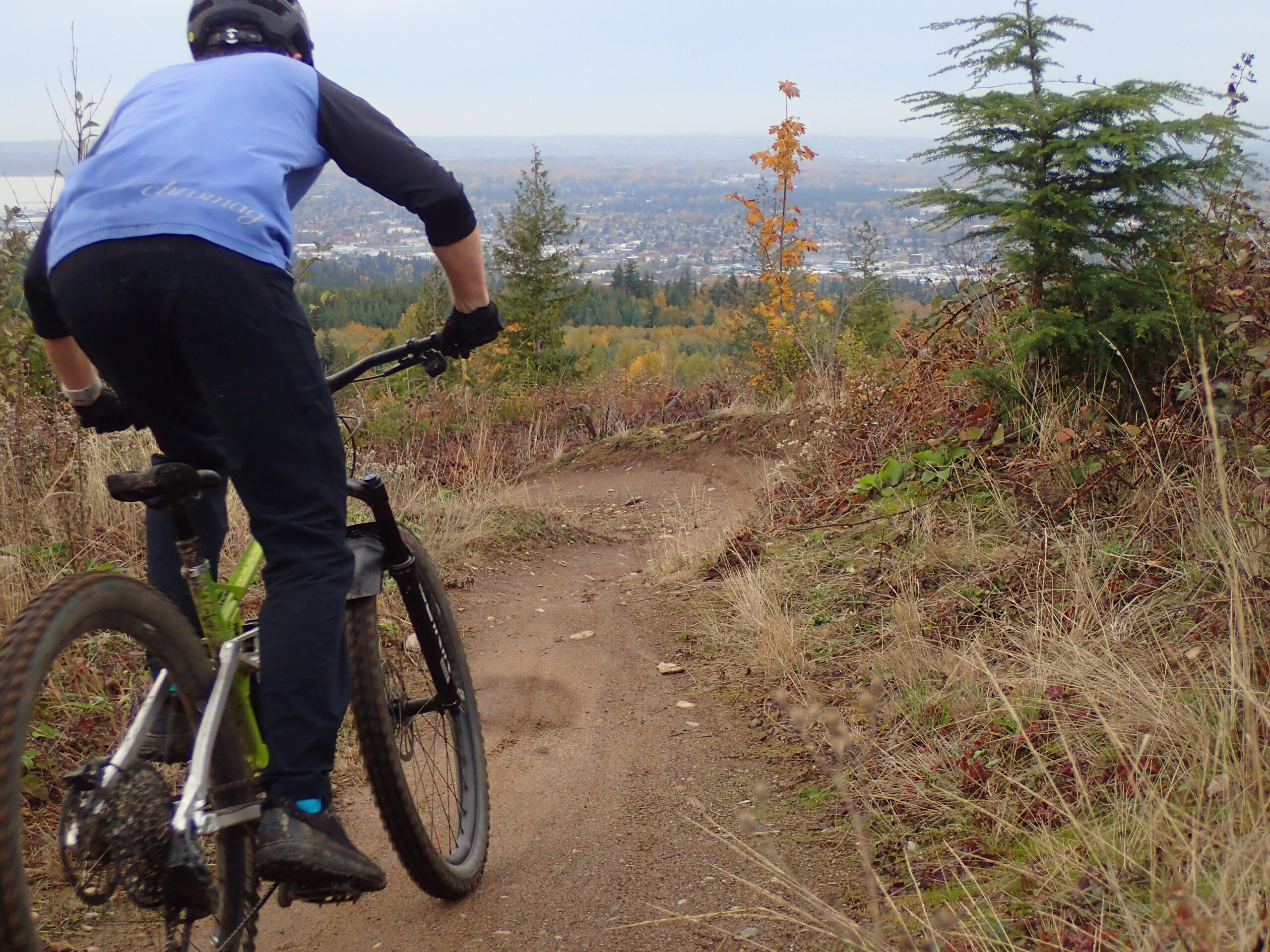
Call me a Luddite, but as electronic drivetrains become more ubiquitous and the novelty wears off a bit, I find myself appreciating mechanical drivetrains even more. To be clear, SRAM’s GX Transmission works very, very well and more closely matches Shimano’s ability to shift under power than SRAM’s mechanical offerings. That said, I would personally take the savings from opting for a mechanical drivetrain if it meant upgrades in other areas (e.g., wheels), or more money in my pocket for suspension maintenance down the line. From my experience and for my preferences, a properly tuned cable-actuated drivetrain just doesn’t lose all that much in terms of performance.
With that hot take out of the way, my last comments are on the wheels and tires. I too ran much more pressure than I typically would to keep the high-volume, thin-casing Vittoria Mazza tires from squirming, but even then, they still exhibited a disconcerting amount of casing roll in rough terrain and while cornering. I kept the Mazzas for the full test and they did feel very fast while climbing and on more rolling terrain, though I would imagine that a beefier tire would further increase the Steezl’s confidence while descending. When it came to the Industry Nine Enduro S wheelset, I found them a bit more flimsy than David did, a feeling perhaps exacerbated by the Vittoria tires and the wheels’ tendency to lose tension. They felt quite forgiving in rough terrain but made a ton of noise under power, and the hesitancy to stay true and hold tension was not an encouraging sign from a durability perspective.
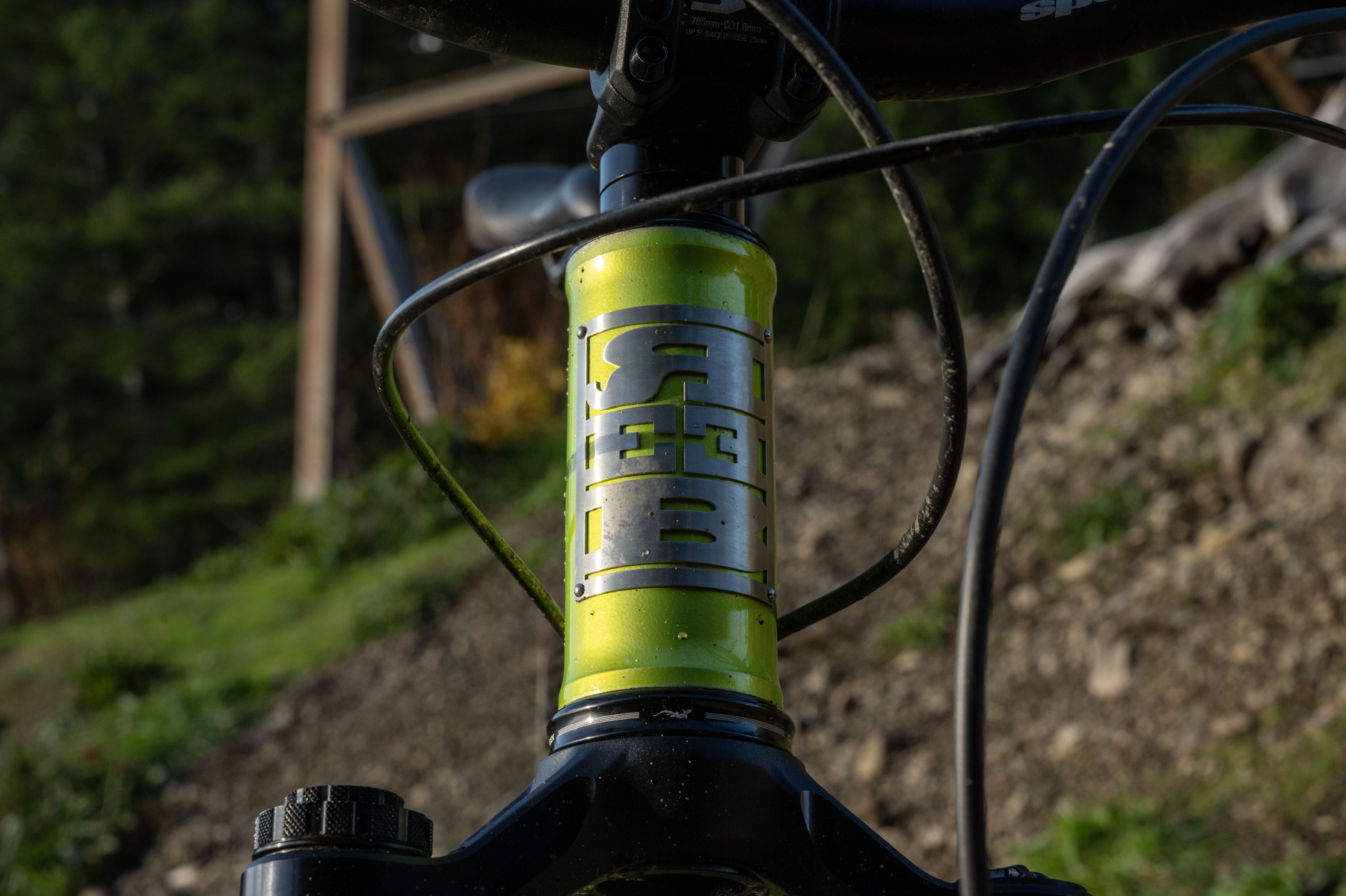
Who’s It For?
David: REEB generally has the right idea when they describe the Steezl as being for “big rides in big terrain,” though I might put a little more emphasis on the “big rides” portion of that claim than the “big terrain” bit. It’s a surprisingly efficient, versatile, long-ish travel bike that can handle most trails under a skilled rider, but is more nimble, lively, and not as emphatically composed at speed as the general class of big Enduro race bikes — in a way that is easy to imagine working well for the right folks.
In particular, the Steezl feels ideally suited to folks looking to pedal big miles on trails that are rough enough to make a shorter-travel bike feel punishing, but aren’t so uniformly steep and fast as to hide the shortcomings of a longer, slacker, more stable bike when things get more rolling and varied.
Zack: In a world where many bikes have started to feel more specialized within the multiplying genres of Trail, Enduro, etc., the REEB Steezl strikes remarkably closely at my core belief of what a modern all-around mountain bike looks like. The frame is solid and capable, it pedals well and is comfortable for long days in the saddle, and it proved to be a lot of fun on both more meandering and more game-on trails. Riders looking for a forgiving yet efficient bike can stick with the Steezl’s shorter chainstays, lighter tires, and a lighter fork, whereas I’d wager some significant capability gains can be made with longer stays, burlier tires, and a burlier fork for the descending-oriented crowd.
Regardless of the setup, the Steezl should appeal to riders who generally prefer a bike that does not pigeonhole them into one particular style of trail or riding, and for folks who want a set-and-forget partner for big rides in all terrain, it’s a very compelling option.
Bottom Line
REEB’s description of the Steezl as being a bike for “big rides in big terrain” is largely on the mark, but the Steezl is more versatile in how well it handles mellower trails, and maybe a little less fully composed and game-on when things get super steep and rough than the “big terrain” part might suggest.
The Steezl blurs the line between a lot of true all-rounder Trail bikes and most full-on Enduro race ones in a way that we can easily imagine working well for some folks who want a bike that can do a bit of everything. It should be especially appealing for those who prioritize efficient pedaling and a lively, poppy platform that still has a bit more suspension travel and composure when things get really rough than a lot of other bikes that fit that same description.
There are better options if you want a really big bruiser of a bike to just bulldoze whatever’s in front of it, but the Steezl could make a lot of sense if you find the burliest Enduro bikes to feel like overkill and want something that’s more versatile in a wider range of terrain. The Steezl frame’s build quality is also excellent, it’s simple to service, and we’d bet on it being an easy bike to live with for the long haul. If you’re drawn to all that — and especially if you’re into the idea of buying a US-made frame that you won’t see a dozen of at every trailhead — there’s a lot to like about the Steezl.
Deep Dive Comparisons
BLISTER+ members and those who purchase our Digital Access Pass can check out our Deep Dive comparisons linked below. Get our Digital Access Pass to view all our Deep Dives and Flash Reviews, or become a BLISTER+ member today to get access to that and a LOT more, including the best worldwide Outdoor Injury Insurance, exclusive deals and discounts on skis, personalized gear recommendations from us, and much more.
Check out our Deep Dive comparisons of the REEB Steezl to see how it compares to the Ibis Ripmo V2S, Trek Fuel EX, Guerrilla Gravity Smash, Starling Murmur Enduro, Orbea Occam LT, Orbea Rallon, We Are One Arrival 152, Santa Cruz Bronson, Propain Tyee, Yeti SB160, Cotic RocketMAX, and Banshee Titan.

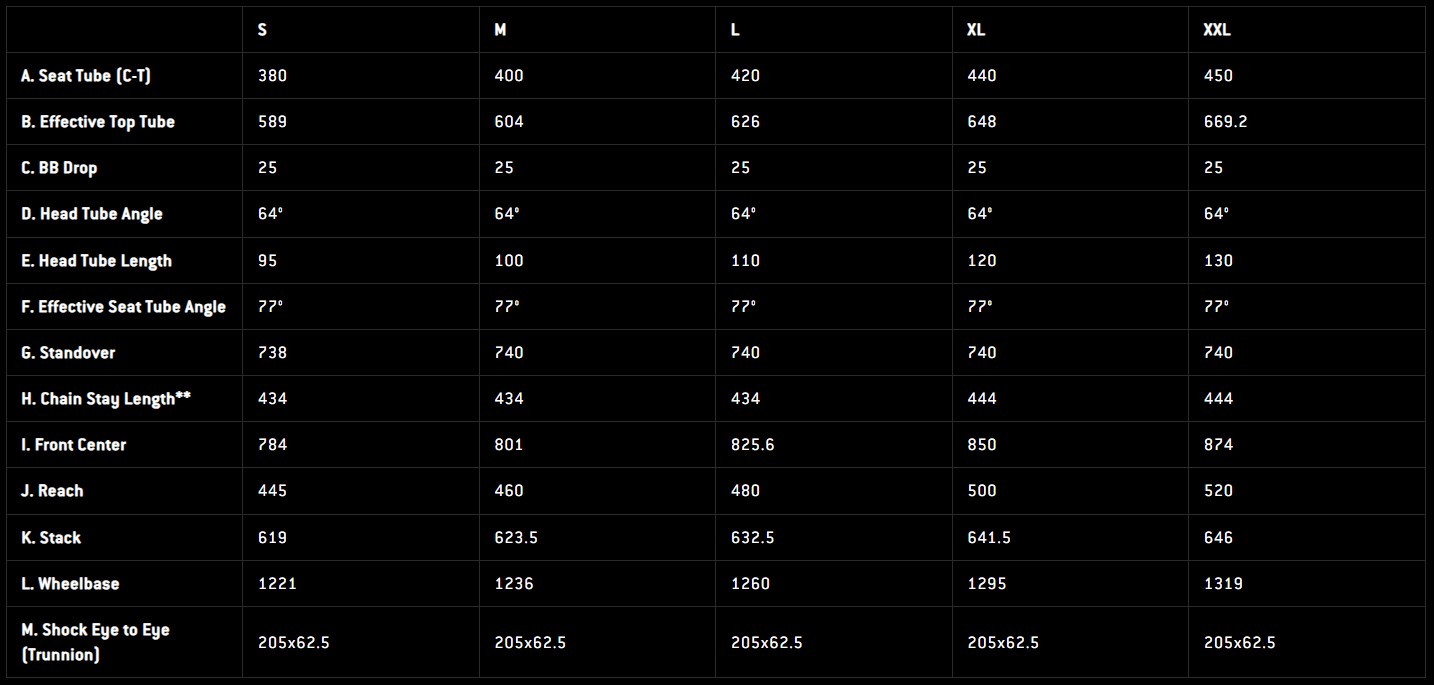
I’d totally buy this bike, except it doesn’t have the brake hoses routed through the headset.
I know you’re joking, but this still made my eye twitch.
Tjaard is a funny guy. Watch him carefully….
I’m more of a Steezl guy, but this bike looks cool, if heavy. Reminds me of a modern day Turner w/r/t aesthetics.
I have an SST and I love it. My only complaint is it chews through rear travel quickly. Seems like the case here too, oh well, dial up compression lol. Amazing bikes
I have a Steezl with a 170mm ZEB and a Super Deluxe coil with HBO. I feel this is what the Steezl should be. I love it.
Been riding one of these since June. Review is pretty spot on. Have tried both an air and coil shock. Air shock needed larger volume spacers to prevent bottoming but had no such issues with the coil, I suspect from being comfortable running additional compression damping and the longer stiffer bottom out bumper. Only gripe is that I think it would feel more balanced with a 170mm fork. This is also one of the most handsome modern mountain bikes I have seen in person.